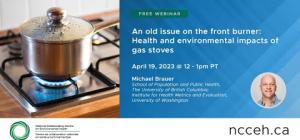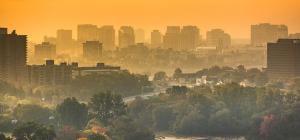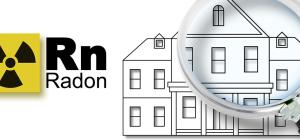
Mould: Assessment, remediation and building for resilience

Mould is a ubiquitous fungus in indoor and outdoor environments. The general population is commonly exposed to mould through inhalation, and less commonly through direct contact, with no adverse effects. However, individuals with asthma or other underlying respiratory ailments may show sensitivity to mould or its cellular components that may trigger respiratory tract irritations (coughing, shortness of breath) or exacerbate existing respiratory symptoms. If an indoor condition such as excess moisture results in mould growth, mould may also be an indicator of deteriorating building integrity and negatively impact indoor air quality.
Assessing mould exposure is complex, requiring investigations that include qualitative observations and, when the presence of mould is uncertain but suspected, quantitative measurements. Public health inspectors and other environmental health professionals may be tasked with addressing public inquiries about indoor mould, conducting walk-through investigations, and/or reviewing microbial laboratory reports from surface or air sampling. Evidence of mould growth in an indoor environment generally prompts action to remove the mould and remediate the conditions that promote its growth. Complex cases may require the involvement of professionals with specific knowledge, training, and experience in mould assessment and remediation.
Assessment and remediation training for EPH professionals
- Guide to addressing moisture and mould indoors (Health Canada, 2023)
This guidance provides practical recommendations to address this potential health hazard, including guidance for assessing the magnitude of the problem, a prevention checklist, and considerations when hiring a professional to remediate mould and moisture issues indoors.
- Mould investigation: an online course for public health professionals (NCCEH, 2020)
This free online course provides practitioners with instruction on mould inspection, sampling, remediation, and prevention. It can be completed in 6-8 hours and learners will receive a Certificate of Completion and 7 professional development hours for CIPHI(C) holders.
- Mould Compendium (Institut national de santé publique du Québec, 2017)
This webpage lists a series of descriptive fact sheets on some common moulds present in the indoor environment.
- Mould investigation toolkit (NCCEH, 2014)
This toolkit provides PHIs and EHOs with some of the tools for evaluating indoor environments for mould (and other microorganisms), providing information, conducting walkthrough investigations, and understanding laboratory and consultant reports that they may be asked to review.
- Mould remediation recommendations (Palaty and Shum, 2014)
This evidence review provides PHIs and EHOs with a summary of current knowledge about mould remediation in homes and focuses on the main goals of remediation which are to reduce the risk of exposure to mould and to prevent structural damage.
- Mould Assessment Recommendations (Palaty and Shum, 2014)
This report outlines the basic principles for mould assessment in the home, and identifies some knowledge gaps around mould exposure and assessment in indoor and outdoor environments.
- Indoor Air Quality Workshop (Fong, 2013)
This presentation was given in a CIPHI indoor air quality workshop (slides only) and gives some basic information on how to sample for mould, how to interpret the results, and resources for remediation.
Mould prevention and remediation resources for the public
- Do-it-yourself (DIY) air cleaners: Evidence on effectiveness and considerations for safe operation (Eykelbosh, 2023)
This evidence review compares the effectiveness of low-cost do-it-yourself air cleaners to commercially available options and may be useful to develop recommendations around supporting occupants in mould-affected spaces. Please also see the related webinar recording and FAQs from the webinar.
- Mould (Health Canada, 2022)
This webpage provides an overview of health risks, signs of mould, mould remediation and prevention, a point relevant to landlords/tenants, and reports and publications on the topic.
- Resources for flood cleanup and indoor air quality (US Environmental Protection Agency, 2022)
This webpage includes both general and technical guidance and webinars on flood cleanup and indoor air quality.
- Interactive Mold House Tour (US Environmental Protection Agency, 2022)
This interactive house tour (requires JavaScript enabled to function properly) takes visitors on a tour of a mouldy house.
- Moisture and air: A guide for understanding and fixing interior moisture problems in housing (Canadian Mortgage and Housing Corporation, 2018)
This guidance document explains the factors that control air movement and moisture generation within a home or multi-unit residential buildings, and provides room-by-room advice on how to identify both obvious and hidden moisture problems and eliminate them.
- Infographic: Mould (Health Canada, 2017)
This bilingual infographic depicts a visual overview of mould and its causes, health effects, who is at risk, what to do when there is mould in the home, and ways to prevent mould growth.
- A Brief Guide to Mold, Moisture and your Home (US Environmental Protection Agency, 2016)
This plain language guide informs homeowners and renters on how to clean up mould problems and how to prevent mould growth.
Health impacts of mould
- Health risks associated with the indoor presence of moulds (Institut national de santé publique du Québec, 2016)
This is a summary of a scientific report produced by the INSPQ Task Force who conducted a literature review on the topic.
- Health Effects from Mould Exposure in Indoor Environments (Palaty and Shum, 2012)
This evidence review discusses the known vs. uncertain impacts of mould on respiratory health.
Preventing mould through resilient design
- Integrated management of residential indoor air quality: A call for stakeholders in a changing climate(Levasseur et al., 2017)
This peer-reviewed article examines the impacts of climate change on indoor air quality (IAQ) and discusses the effectiveness of various adaptation measures that integrate various determinants of IAQ (building design, use of interior materials and furnishings, ventilation, and occupant behaviours). The authors made recommendations for different stakeholders to proactively develop integrated adaptation plans for building owners and managers to mitigate and prevent impacts of climate change on thermal comfort and IAQ.






